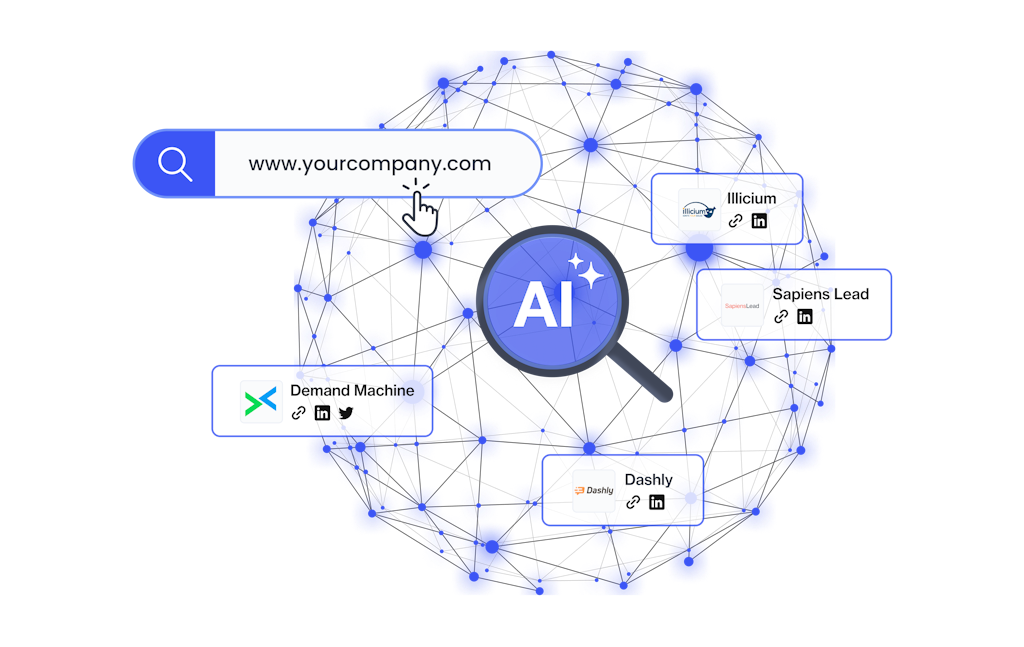What is B2B Prospecting?
What is B2B Prospecting?

B2B prospecting identifies and reaches out to potential customers in a business-to-business context. It serves as the compass guiding businesses towards unexplored opportunities and unearthing potential partnerships that can catalyze growth and success.
The foundation of B2B prospecting is built upon a thorough understanding of the market, industry trends, and the pain points faced by potential customers. This knowledge empowers businesses to tailor their approach, positioning themselves as problem solvers rather than sellers.
A key hallmark of successful B2B prospecting is the initiation of contact. This initial outreach bridges two businesses and opens the door to potential opportunities. This phase demands finesse, as the first impression can set the tone for the entire relationship.
Why is B2B Prospecting Important?
Why is B2B Prospecting Important?
B2B prospecting guides businesses to navigate uncharted waters, enabling them to identify, engage, and nurture potential customers while fostering relationships that fuel revenue generation.

Here are detailed ways of how the strategic deployments of B2B prospecting underpin thriving sales and marketing endeavors;
Identifying potential customers
Identifying potential customers
By thoroughly researching and profiling target companies, B2B prospecting identifies potential customers that might remain concealed amidst the vast sea of opportunities.
Expanding customer base
Expanding customer base
Effective B2B prospecting offers a gateway to expand the customer base by reaching new horizons and untapped markets.
Generating sales opportunities
Generating sales opportunities
Each prospect holds the promise of a mutually beneficial partnership, injecting vitality into the company's financial health.
Building relationships
Building relationships
B2B prospecting initiates the dialogue that evolves into partnerships, where businesses become allies on a shared journey, collaborating to overcome challenges and seize opportunities.
Staying competitive
Staying competitive
By staying attuned to industry trends and engaging with potential customers, businesses position themselves as forward-thinkers, ready to adapt and innovate to meet evolving market demands.
Adapting to changing needs
Adapting to changing needs
Continually scanning the horizon for emerging needs allows businesses to tailor their offerings and strategies to stay relevant and responsive.
B2B prospecting shapes business growth by uncovering hidden business gems and sculpting enduring business relationships. As a result, businesses can weather the storm of change and embrace them as catalysts for evolution, ensuring business survival.
Understanding B2B Prospecting
Understanding B2B Prospecting
B2B prospecting is the systematic and strategic process of identifying, engaging with, and nurturing potential customers within the business-to-business landscape. Unlike traditional sales approaches, B2B prospecting seeks to establish meaningful relationships and unearth opportunities before they even surface.
The purpose of B2B prospecting is to initiate early contact and nurture long-lasting relationships for businesses to position themselves as proactive problem solvers, strategic collaborators, and trusted advisors.
The business model uses objectives that identify businesses with the highest potential for mutual benefit, understanding their unique pain points, aligning offerings to address these needs, and cultivating rapport that transforms leads into loyal partners.
At its core, B2B prospecting enables businesses to customize their approach, enhancing the likelihood of resonating with the prospect's needs. By nurturing relationships early on, B2B prospecting cultivates an environment of trust and mutual respect, laying the groundwork for fruitful collaborations and sustainable growth.
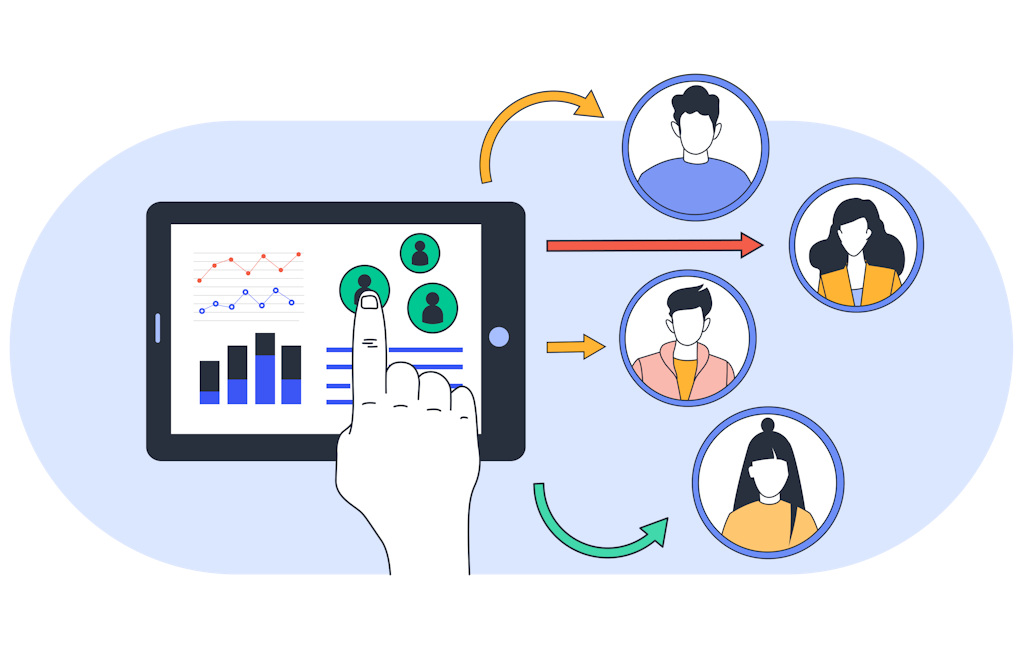
B2B vs B2C Prospecting
In prospecting, two distinct worlds emerge B2B (business-to-business) and B2C (business-to-consumer). Here is a comparative exploration of these divergent pathways;
Target audience
Target audience
B2B prospecting focuses on nurturing relationships beyond individual transactions, while B2C prospecting aims at individual consumers, appealing to their preferences, needs, and desires.
Decision-making process
Decision-making process
Complex decision-making structures involving committees, departments, and executives characterize the B2B world. On the other hand, B2C prospecting centers on the individual consumer, with decisions influenced by personal emotions, trends, and immediate needs.
Relationship building
Relationship building
B2B prospecting thrives on cultivating enduring relationships, while B2C prospecting tends to be more transactional, focusing on immediate gratification and building brand loyalty through personalized experiences.
Personalization
Personalization
B2B prospecting messages are tailored to resonate with specific needs, showcasing how the offering aligns with the client's goals. On the B2C front, personalization is geared towards individual consumer preferences, offering products or services catering to their tastes and aspirations.
Marketing channels
Marketing channels
B2B prospecting uses professional platforms like LinkedIn, where networking and industry-specific conversations thrive. On the B2C side, social media, influencer marketing, and consumer-focused platforms take center stage, connecting directly with individual consumers in spaces where they seek entertainment, inspiration, or convenience.
Sales volume and deal size
Sales volume and deal size
Fewer transactions of higher value characterize B2B prospecting. B2C prospecting entails a higher volume of transactions, although at a lower individual value.
B2B and B2C prospecting are two sides of a multifaceted coin, each shaped by its distinct target audience, decision-making dynamics, relationship goals, and marketing strategies. Understanding these differences is vital for businesses seeking to tailor their efforts for maximum impact in each unique context.
See the magic for yourself
See the magic for yourself
Why waste time on prospects that don't convert?
Get a free trial or book a personalized demo.
Start now Why waste time on prospects that don't convert?
Get a free trial or book a personalized demo.
Free Trial
Dedicated CSM
Global Coverage
GDPR compliant
Benefits of B2B Prospecting
Benefits of B2B Prospecting
B2B prospecting is a journey where strategy meets opportunity, creating a synergy that fuels growth and elevates marketing endeavors' return on investment (ROI). Here are some of the benefits that B2B prospecting bestows on businesses:
Identify potential customers
Identify potential customers
B2B prospecting can identify potential customers with pinpoint accuracy. It stems from a targeted approach, where businesses leverage market research to unearth institutions that align seamlessly with their offerings.
Increased sales and revenue generation
Increased sales and revenue generation
Relationship-building leads into loyal clients, converting one-time buyers into advocates who champion the business's offerings. It paves the way for cross-selling and upselling opportunities, where existing clients become receptive to exploring additional products or services.
Sales funnel optimization
Sales funnel optimization
The journey begins with personalized outreach, capturing the prospect's attention and laying the groundwork for engagement. This personalized approach, stemming from prospecting efforts, significantly increases the likelihood of conversion
Enhanced customer retention
Enhanced customer retention
B2B prospecting contributes to enhanced customer retention by creating a foundation of trust and understanding.
Higher ROI in marketing efforts
Higher ROI in marketing efforts
By focusing on targeted prospects, businesses reduce the wastage of resources on unqualified leads, directing their efforts towards those most likely to convert, maximizing the impact of marketing initiatives.
The benefits of B2B prospecting are diverse and profound–from cultivating a qualified lead pipeline to nurturing enduring relationships and maximizing the ROI of marketing endeavors. B2B prospecting is a strategic imperative that drives growth and shapes the essence of successful business interactions.
Key Components of B2B Prospecting
Key Components of B2B Prospecting
B2B prospecting has elements that harmonize to create a symphony of growth and opportunity. Here are components contributing to creating a strategy that identifies potential leads, transforming them into thriving partnerships.

Ideal customer profile (ICP)
Ideal customer profile (ICP)
It's a comprehensive framework defining the characteristics of the most promising leads. Crafting an ICP involves understanding the target audience's industry, pain points, and aspirations. The benefits include efficient resource allocation, improved messaging and personalization, and a streamlined sales process that resonate with prospects.
Lead qualification criteria
Lead qualification criteria
Establishing clear criteria based on budget, authority, need, and timeline (BANT) ensures businesses concentrate their efforts on prospects who meet specific thresholds. This strategy optimizes resource allocation and expedites the sales process by directing focus where it matters.
Effective lead nurturing
Effective lead nurturing
It involves guiding leads through a strategic journey that transforms casual interest into informed consideration and, eventually, active engagement. Effective lead nurturing leverages personalized content, timely follow-ups, and custom interactions to address each lead's unique needs and pain points.
Personalized outreach techniques
Personalized outreach techniques
The technique involves crafting messages that speak directly to the prospect's pain points, needs, and aspirations. Through tailored emails, direct messages, or even personalized videos, businesses demonstrate a genuine understanding of the prospect's challenges and offer solutions.
Strategic follow-up
Strategic follow-up
Regular and thoughtful follow-ups demonstrate commitment and persistence, nudging prospects from initial contact to active consideration. These follow-ups offer additional value, insights, or resources showcasing the business's expertise and reinforcing the prospect's perception of the brand.
These key components of B2B prospecting weave together to form a comprehensive strategy that stimulates growth and opportunity. The strategy allows businesses to lay the foundation for a journey that transforms leads into partners.
Prospecting Channels and Strategies
Prospecting Channels and Strategies
In B2B prospecting, many channels and strategies beckon, each offering a unique path to discovery and connection. Let's explore these diverse avenues, shedding light on the methodologies that fuel successful B2B prospecting endeavors.
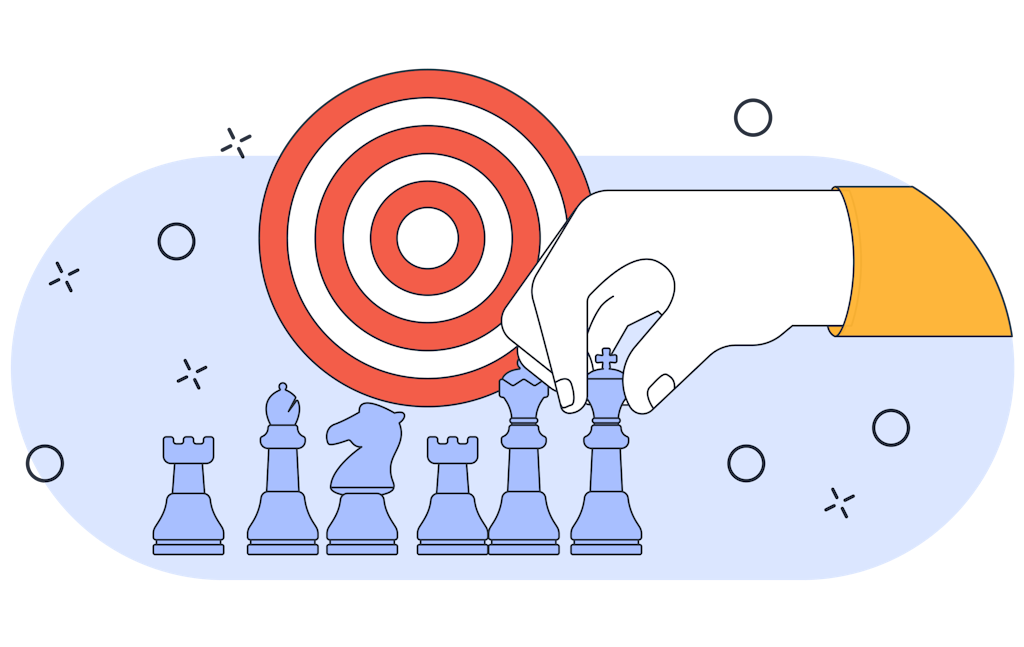
Targeting
Targeting
It begins with crafting an ideal customer profile (ICP) outlining the most promising leads' characteristics, pain points, and aspirations. By defining this profile, businesses streamline their efforts, ensuring every outreach is tailored to resonate with its audience.
Research
Research
Extensive market research unveils industry trends, competitor landscapes, and prospect behaviors. Businesses forge connections that matter by having well-researched reports and information.
Lead generation
Lead generation
It involves a strategic blend of methods, from targeted marketing campaigns to captivating content creation. By creating a magnetic field of interest, businesses beckon potential leads to express curiosity.
Outreach
Outreach
It's the art of capturing attention and inviting prospects into a meaningful dialogue. Whether through personalized emails, social media interactions, or direct messages, effective outreach crafts messages that resonate with the prospect's pain points and aspirations.
Qualification
Qualification
It's the process of evaluating leads against a predetermined litmus test. Is there genuine interest? Do they possess budget availability? Does their profile align with the ICP? Qualification discerns those with the highest potential for conversion.
Nurturing and follow-up
Nurturing and follow-up
It involves delivering value beyond the initial engagement, demonstrating commitment and expertise. Personalized interactions, informative content, and timely follow-ups create a flow of engagement beyond transactional encounters.
Each channel and strategy plays a distinct note, contributing to engagement and connection. As these components synchronize in unison, they create a symphony that captures the hearts and minds of potential partners, cementing the path toward prosperous collaborations.
See the magic for yourself
See the magic for yourself
Why waste time on prospects that don't convert?
Get a free trial or book a personalized demo.
Start Now Why waste time on prospects that don't convert?
Get a free trial or book a personalized demo.
Free Trial
Dedicated CSM
Global Coverage
GDPR compliant
Inbound Marketing B2B Prospecting Strategies
Inbound Marketing B2B Prospecting Strategies
Inbound marketing invites potential partners calmly rather than aggressively pursuing them. Here are notable strategies used by businesses to magnetize their offering;
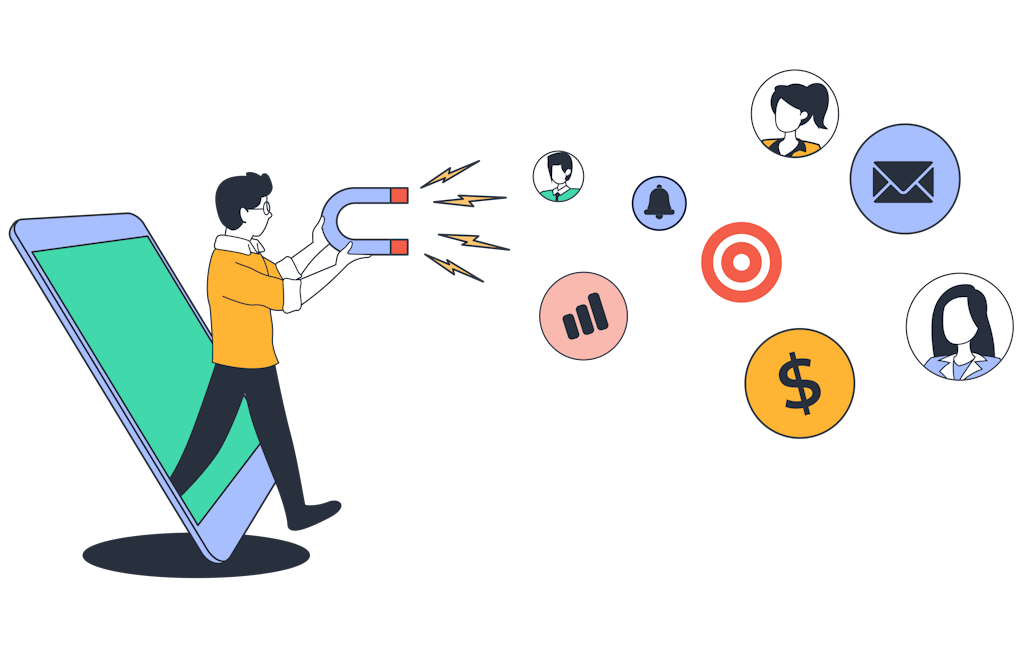
Content marketing
Content marketing
Through thought-provoking articles, informative whitepapers, and insightful videos, businesses showcase their expertise and provide solutions to prospects' pain points. By nurturing a culture of learning and engagement, content marketing establishes businesses as trusted thought leaders, forging connections that lay the foundation for fruitful partnerships.
Lead magnets
Lead magnets
These valuable resources, such as e-books, guides, or templates, are offered in exchange for prospect information. Lead magnets create a win-win scenario: prospects gain valuable insights while businesses acquire the means to initiate conversations and nurture relationships.
Email marketing
Email marketing
Through carefully crafted emails, businesses initiate personalized conversations, addressing individual challenges and aspirations. Email campaigns deliver value-driven content and exclusive offers, nurturing potential through each stage.
Social media marketing
Social media marketing
Platforms like LinkedIn, Twitter, and Facebook provide spaces for businesses to share content, engage in industry conversations, and foster connections with prospects. Social media marketing disseminates information while humanizing the brand, making it relatable and accessible to potential partners.
Webinars and online events
Webinars and online events
Hosting webinars allow businesses to demonstrate their expertise in real-time, addressing complex topics and providing actionable insights. These events facilitate direct engagement, enabling businesses to interact with prospects, answer questions, and build a rapport that transcends the digital realm.
Referral marketing
Referral marketing
By incentivizing referrals, businesses create a cycle of positive word-of-mouth, where satisfied clients become brand advocates. Referral marketing leverages the trust and credibility of existing relationships, extending the reach of prospecting efforts through organic endorsements.
Influencer marketing
Influencer marketing
Collaborating with influencers allows businesses to tap into existing networks, benefiting from the influencer's credibility and reach. These partnerships amplify brand exposure, fostering prospect interest and positioning the business as a relevant and trusted authority within the industry.
As businesses harness the power of these techniques, they build a magnetic force that engages prospects and establishes the groundwork for meaningful, long-lasting partnerships.
Outbound Marketing B2B Prospecting Strategies
Outbound Marketing B2B Prospecting Strategies
While inbound strategies beckon prospects to discover your offerings, outbound strategies proactively reach out to potential partners with a tailored message. These strategies include the following;
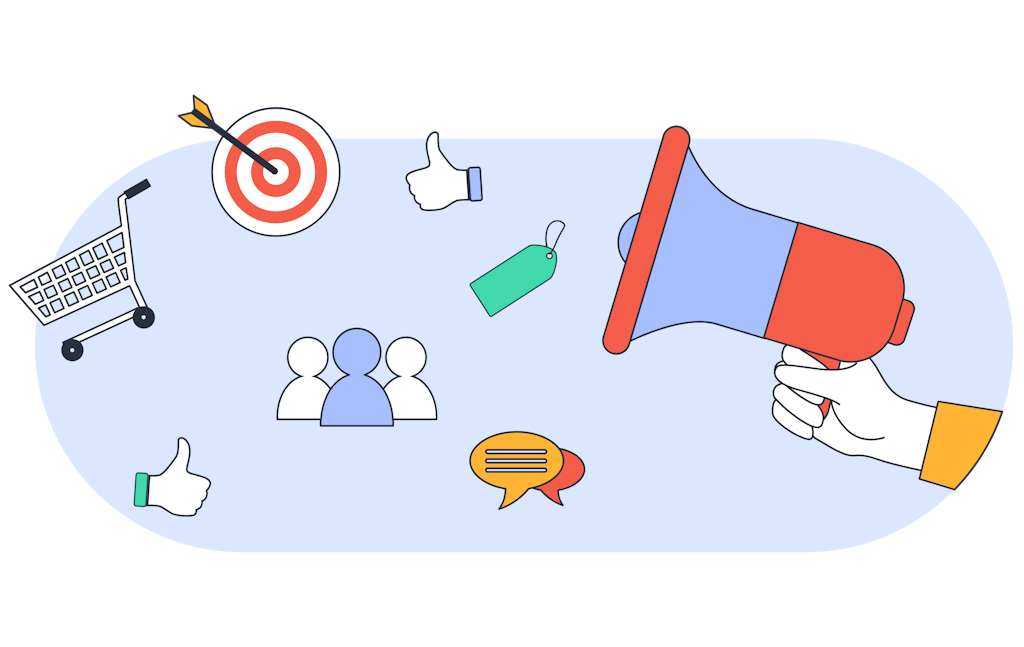
Cold calling
Cold calling
Cold calls offer immediate interaction, enabling businesses to introduce themselves, gauge interest, and delve into potential pain points. The benefit lies in the personal touch – a genuine conversation that paves the way for building rapport and understanding.
Cold emailing
Cold emailing
This strategy allows businesses to craft compelling emails that resonate with prospect pain points. Businesses can reach a broad audience with tailored messages. Cold emailing also allows prospects to engage at their own pace, fostering interest and nurturing connections over time.
Direct mail campaigns
Direct mail campaigns
Businesses can stand out among their competitor's emails by sending personalized mail. Direct mail campaigns create a sensory experience, leveraging creativity to capture attention and make a lasting impression. The act demands attention and showcases a commitment to engagement.
LinkedIn prospecting
LinkedIn prospecting
Businesses can identify, connect with, and engage potential partners by leveraging the platform's networking capabilities. LinkedIn prospecting allows for targeted interactions, tapping into prospects' professional personas.
Retargeting and remarketing
Retargeting and remarketing
This technique keeps the brand top of mind, nurturing prospects through strategic touchpoints. By reaching out to prospects who have previously engaged with your brand, businesses rekindle interest and invite them back into the conversation.
Whether through direct conversations or strategic touchpoints, outbound strategies extend invitations, spark curiosity, and lay the groundwork for fruitful partnerships.
See the magic for yourself
See the magic for yourself
Why waste time on prospects that don't convert?
Get a free trial or book a personalized demo.
Start Now Why waste time on prospects that don't convert?
Get a free trial or book a personalized demo.
Free Trial
Dedicated CSM
Global Coverage
GDPR compliant
Account Based Marketing
Account Based Marketing
Account Based Marketing (ABM) is a strategic approach focusing on cultivating deep and meaningful relationships with individual high-value accounts. Unlike traditional broad-reaching marketing strategies, ABM has campaigns tailored to each target account's unique needs, pain points, and aspirations.

ABM has two strategic approaches that illuminate its symbiotic relationship with BSB prospecting.
Targeted approach
Targeted approach
This strategy ensures every interaction is finely tuned to resonate deeply with each account's needs and goals. Businesses can allocate resources effectively by focusing on a select group of high-value accounts, optimizing time and effort.
Relationship building
Relationship building
ABM nurtures prospects into long-term partners, transforming initial curiosity into lasting loyalty. Through personalized interactions, tailored content, and thoughtful touchpoints, businesses foster a sense of connection that transcends transactional interactions.
Businesses embracing account-based marketing can engage with high-value accounts, setting the stage for prosperous collaborations and enduring partnerships.
Tools & Technologies for B2B Prospecting
Tools & Technologies for B2B Prospecting
technology emerges as the ultimate ally in B2B prospecting, enhancing every facet of the process. Businesses optimize their prospecting journey through automated email marketing, social media management, CRM systems, sales enablement platforms, data analytics, lead generation software, and event management platforms.
1. CRM Systems
1. CRM Systems
Customer Relationship Management (CRM) systems provide a structured framework to track, organize, and manage interactions. With CRM systems, businesses can seamlessly store and access prospect and customer data, ensuring no valuable insight slips through the cracks.
CRM systems offer different features tailored to elevate prospecting efforts. For example, contact management ensures each interaction is personalized and relevant, fostering deeper connections.
Also, opportunity tracking enables businesses to monitor and manage sales opportunities, facilitating effective follow-ups and ensuring prospects are nurtured along the path to conversion.
In addition, businesses can gain insights into individual prospect behavior by tracking prospect interactions, preferences, and engagement history. This knowledge allows for tailored outreach, ensuring that every interaction resonates deeply.
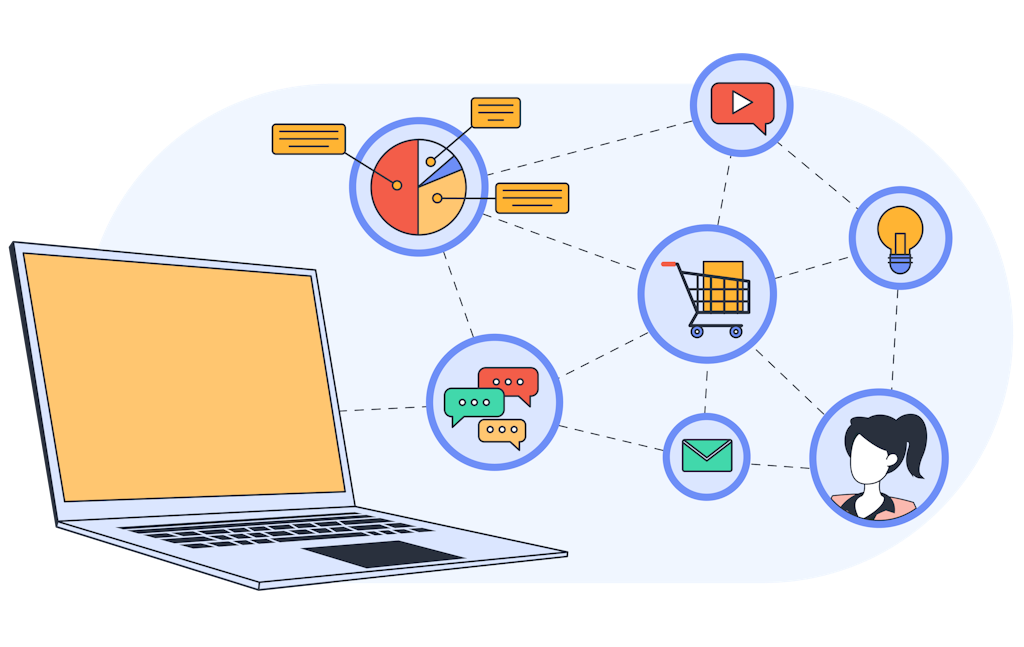
2. Sales & Marketing Automation Tools
2. Sales & Marketing Automation Tools
Sales and marketing automation tools help streamline the prospecting process, automate repetitive tasks, and enable personalized engagement at scale. These tools automate email outreach, lead nurturing, follow-ups, and data management, saving time and improving efficiency for prospecting teams.
They often include features like email marketing automation, lead scoring, workflow automation, campaign management, and integration with CRM systems. Sales and marketing tools enable businesses to craft tailored messages and content to understand individual prospects.
Through advanced marketing segmentation and dynamic content, businesses can ensure every interaction is relevant, valuable, and aligned with the prospect's unique needs and preferences.
3. Data and Analytics Tools
3. Data and Analytics Tools
Data and analytics provide a detailed view of prospect behavior, interactions, and engagement. These insights enable businesses to understand how prospects interact with content, respond to messaging, and progress along the conversion path.
These tools collect, analyze and leverage prospecting data to uncover trends, identify opportunities, and optimize prospecting strategies. Predictive analytics forecast prospect behavior, allowing businesses to tailor their engagement.
Data and analytics tools offer features like data visualization, lead attribution, segmentation, and reporting, enabling businesses to make informed decisions and refine their prospecting efforts
Leverage Ocean.io and Elevate Your B2B Prospective Journey
Leverage Ocean.io and Elevate Your B2B Prospective Journey
Ocean.io is a powerful tool designed to amplify your prospecting efforts and steer your business toward success. Not all prospects are created equal, and we assist in lead identification and prioritization. Our Lookalike Search enables you to align your whole team towards your ICP and duplicates of your best-fit customers.
Whether seeking to target the right prospects, personalize engagement, or gain unparalleled insights, we can help you navigate the seas of B2B prospecting success.
Unleash your potential for relevant outreach and data-driven decisions.
Start now Ocean.io is a powerful tool designed to amplify your prospecting efforts and steer your business toward success. Not all prospects are created equal, and we assist in lead identification and prioritization. Our Lookalike Search enables you to align your whole team towards your ICP and duplicates of your best-fit customers.
Whether seeking to target the right prospects, personalize engagement, or gain unparalleled insights, we can help you navigate the seas of B2B prospecting success.
Unleash your potential for relevant outreach and data-driven decisions.
